Hi Everyone,
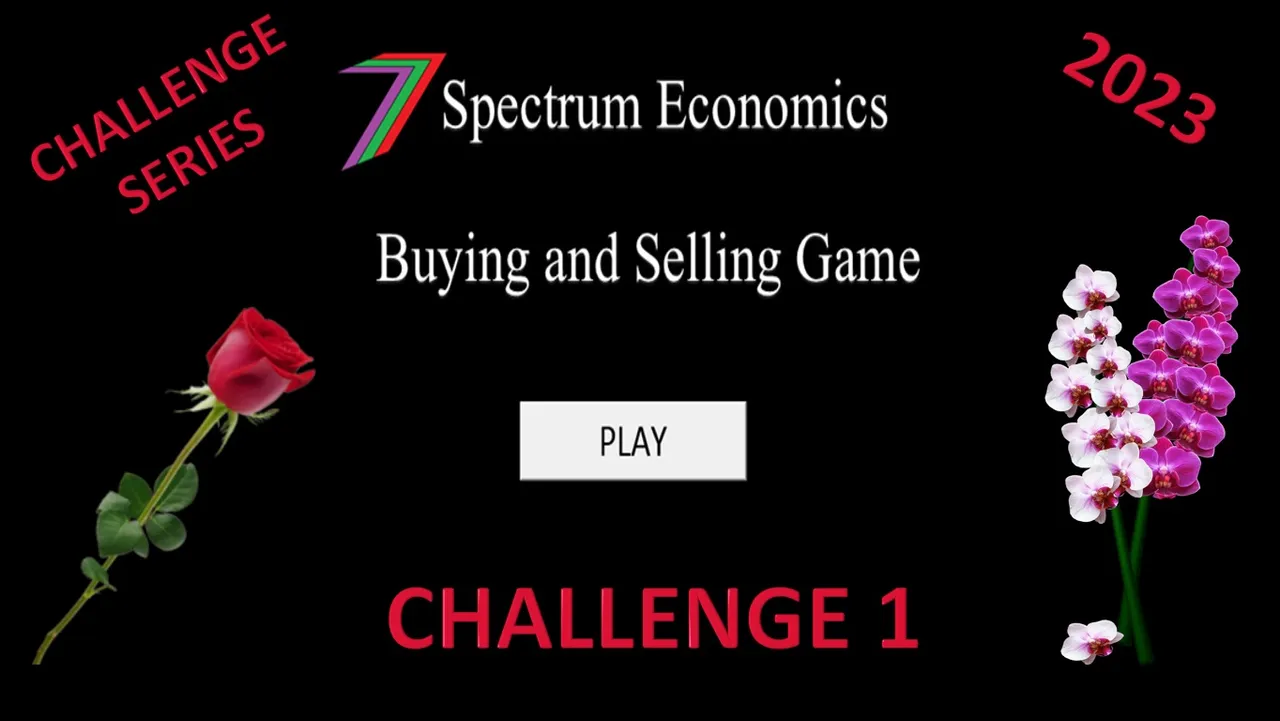
Welcome to the Economics Challenge Series for 2023. For the months of July and August, I am running an economics challenge series. The series consists of seven challenges. All seven challenges will commence in July and the results will be published and announced in August. Four of the seven challenges are returning from last year’s Challenge Series. Two are from the monthly contest series and one challenge is completely new. Below are the list of challenges.
- Challenge 1: Buying and Selling Game
- Challenge 2: Pick-a-Door
- Challenge 3: Complements and Substitutes
- Challenge 4: Buying and Selling Game (Business Version)
- Challenge 5: Ice Cream Game
- Challenge 6: Game Theory Game
- Challenge 7: Even-to-Win
Each challenge could reward winners with as much as 60 Hive Power. The value of the prize will depend on the level of participation. For each new participant, the prize will increase by 5 Hive Power. This will continue until 60 Hive Power is reached (12 participants). The first 12 participants will also receive a 50% upvote from this account. In addition to the prize money, the top few participants will be given points. These points will be used to determine the overall challenge series winner. This winner may receive as much as 80 Hive Power. The value of the prize will equal the sum of the number of participants across all challenges. This will continue until 80 Hive Power is reached.
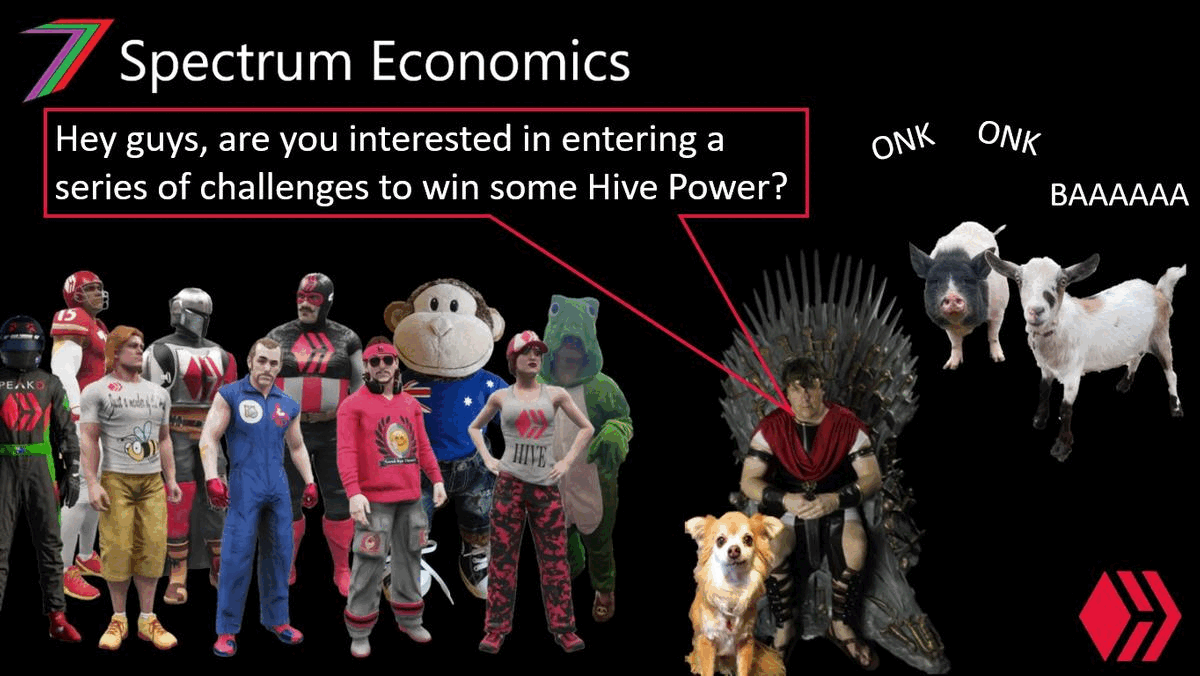
For more information on the challenge series and the upcoming challenges, I recommend that you read my post Economics Challenge Series 2023 (Coming Soon).
Welcome to Challenge 1 – The ‘Buying and Selling’ Game.
Until this year, the Buying and Selling Game (Original Version) and the business version of the game were alternated on a monthly basis. To become more familiar with this contest/challenge as well as how the results are generated, I recommend taking a look at the links below. Last on the list is the original Buying and Selling Game from the 2018 Challenge Series. This is the only challenge to appear in all four challenge series.
- Buying and Selling Game Contest #33 (Final Contest) – 30 Hive to be won
- Buying and Selling Game Contest 33 Results
- Buying and Selling Game Contest #31 – 30 Hive to be won
- Buying and Selling Game Contest 31 Results
- Buying and Selling Game Contest #29 – 30 Hive to be won
- Buying and Selling Game Contest 29 Results
- Spectrum Economics Challenge 3 – 25 SBD to be given away (Original Challenge from 2018
The ‘Buying and Selling’ Game is also explained in the following original video:
How to play?
The ‘Buying and Selling’ Game involves three simple steps.
- Choose one or more of six goods to buy.
- Choose the city or town where you will be buying these goods.
- Choose the city or town where you will be selling these goods.
All the information you need to know to play the game is provided in the question; i.e. no external research is required as all prices are hypothetical and locations are fictitious.
All entries must be made in the comments section of this post.
Each account is only permitted one entry.
Objectives of the game
The objective of the game is to make the highest profit from the sale of all the goods you have bought. If two participants make the exact same profit, the participant that entered first wins.
Game assumptions
All goods of the same type are identical; for example, Good A bought in Town X is the same as Good A bought in Town Y.
There are zero transaction and transport costs.
All cities and towns use the same currency.
What information is provided?
- All the cities and towns are provided.
- All the goods that can be bought in the game are provided.
- All the buying prices of the goods are provided.
- None of the selling prices of the goods are provided. Instead, a possible range of prices is provided. This range is represented by maximum, minimum, and mode prices (i.e. most frequently occurring price). See diagram below.
Selling Price Distribution
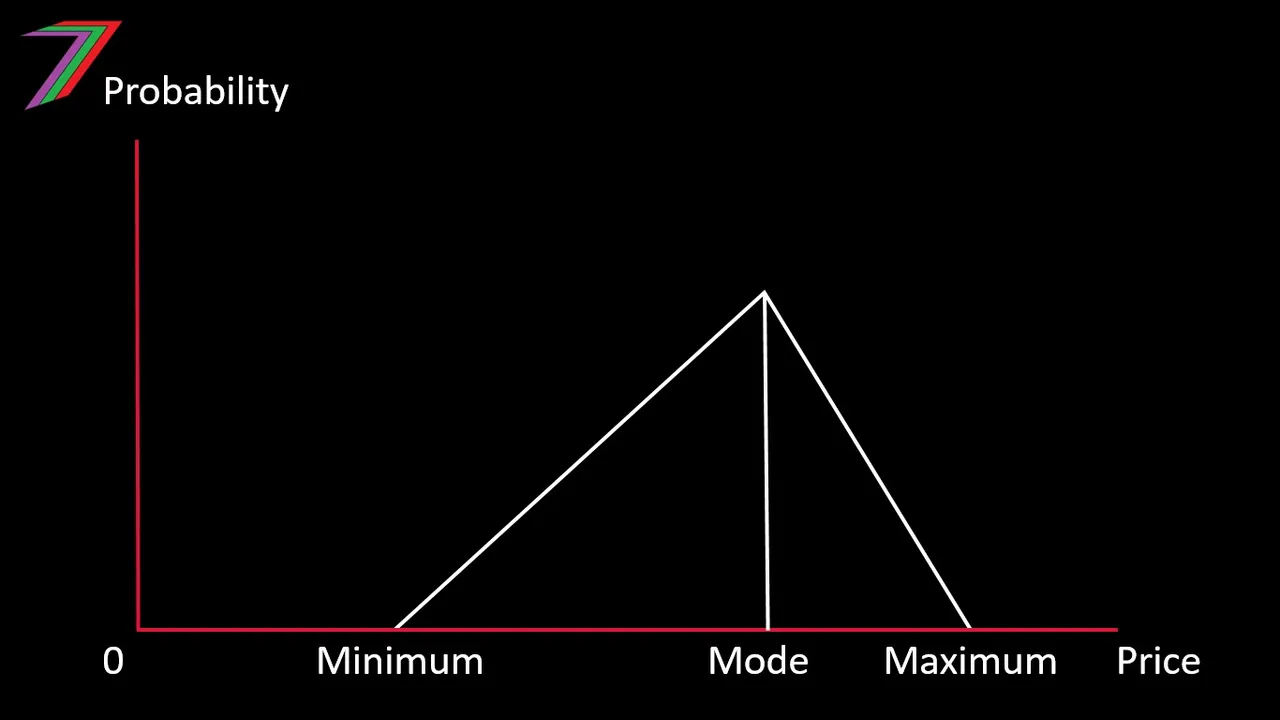
Note: Triangular Distribution
How are the results of the game determined?
A Microsoft Excel Model is used to determine the selling prices of each good in each city or town. These prices will be used to calculate the profits made by each participant. In the results post, the calculation of the selling price will be presented in a video. To learn more about how the results are calculated and presented, click on one of the results post links provided earlier in the post.
Contest Prizes
The total prize for this challenge could reach as high as 60 Hive Power. The number of participants determines the value of the prize. For every entry, the prize is increased by 5 Hive Power until a value of 60 Hive Power is reached. The winner will receive 2/3 of the prize and second place will receive 1/3. The first 12 entries will be given upvotes.
The most profitable buying and selling price combination is also calculated. If the winner adopts this strategy and the value of the prize is below 60 Hive Power, he or she will receive an additional 5 Hive Power. The winner of this challenge will be given 20 points, second place 10 points, and third place 5 points These points will be tallied at the end of the challenge series to determine the overall winner.
Let the challenge begin
Participants have been allocated a budget of $8,000 to buy 1 or more flowers from any of the 5 towns or cities. These towns and cities are as follows:
- Garden City
- Planter Town
- Botan Town
- Green Town
- Arboretum
See map below:
Map of Towns and Cities
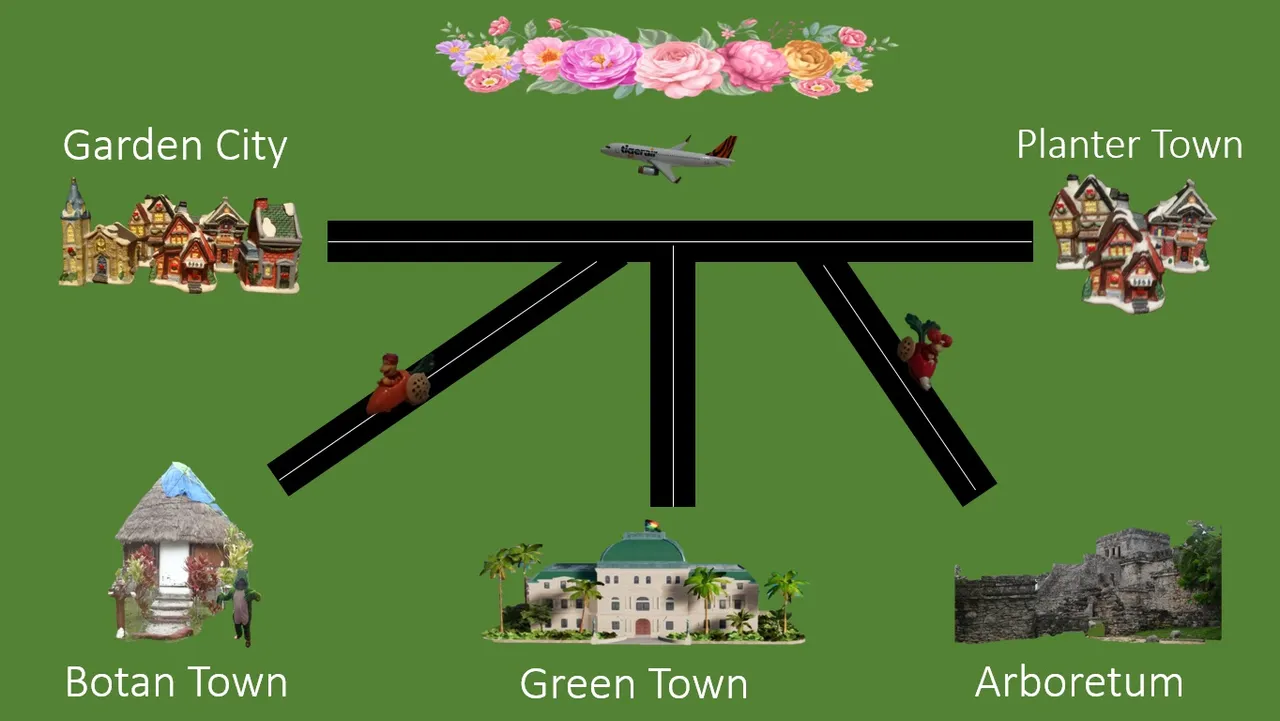
All types of flowers listed in the challenge are available in all 5 towns and cities. The available flowers are as follows:
- Red Roses
- Orchids
- Lilies
- Magnolias
- Tulips
- Carnations
Table 1 contains the prices of each type of flower for each town and city.
Table 1: Prices of flowers for each town and city
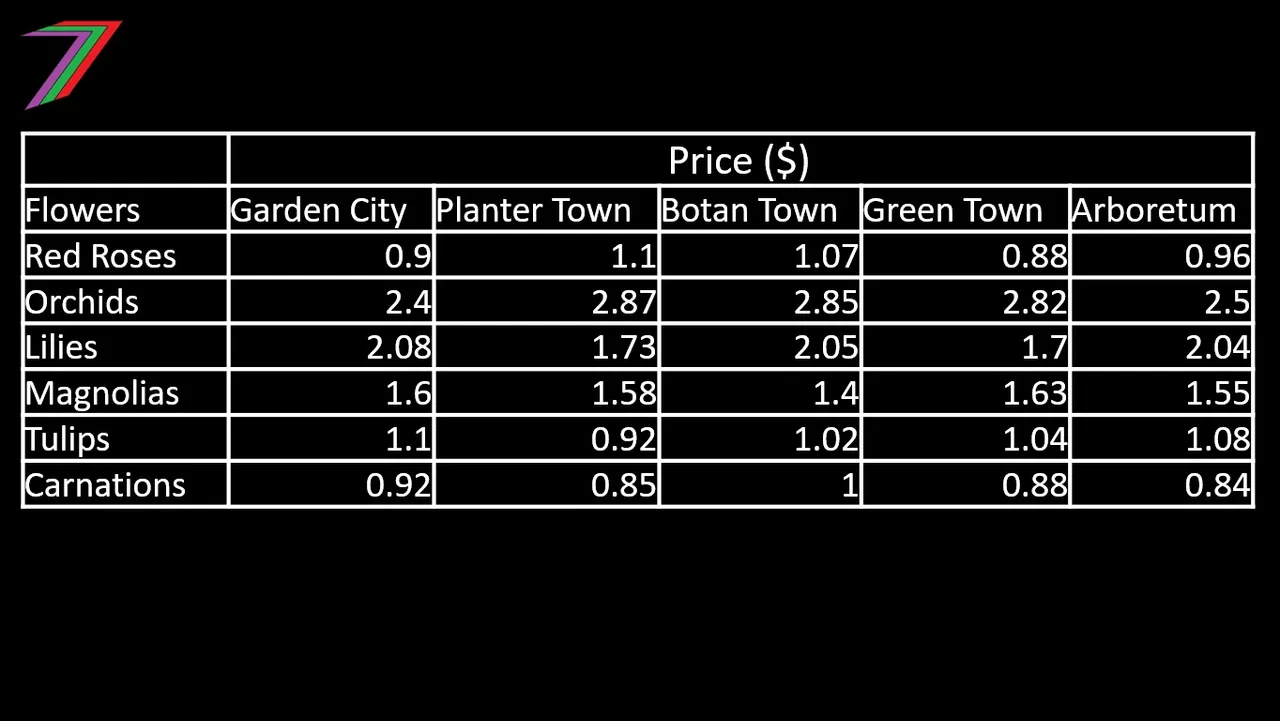
Note: flowers can only be bought as whole flowers. For example, a participant could only buy 8.888 Red Roses from Garden City, as there is insufficient money to buy the 8,889th flower.
After buying the flowers, the participant must then sell all the flowers he or she has bought in just one of the towns or cities named in the question. Remember, the selling prices are revealed in the results post. These prices are determined using the information provided in Tables 2, 3, and 4.
Table 2: Minimum, maximum, and mode (Garden City & Planter Town)
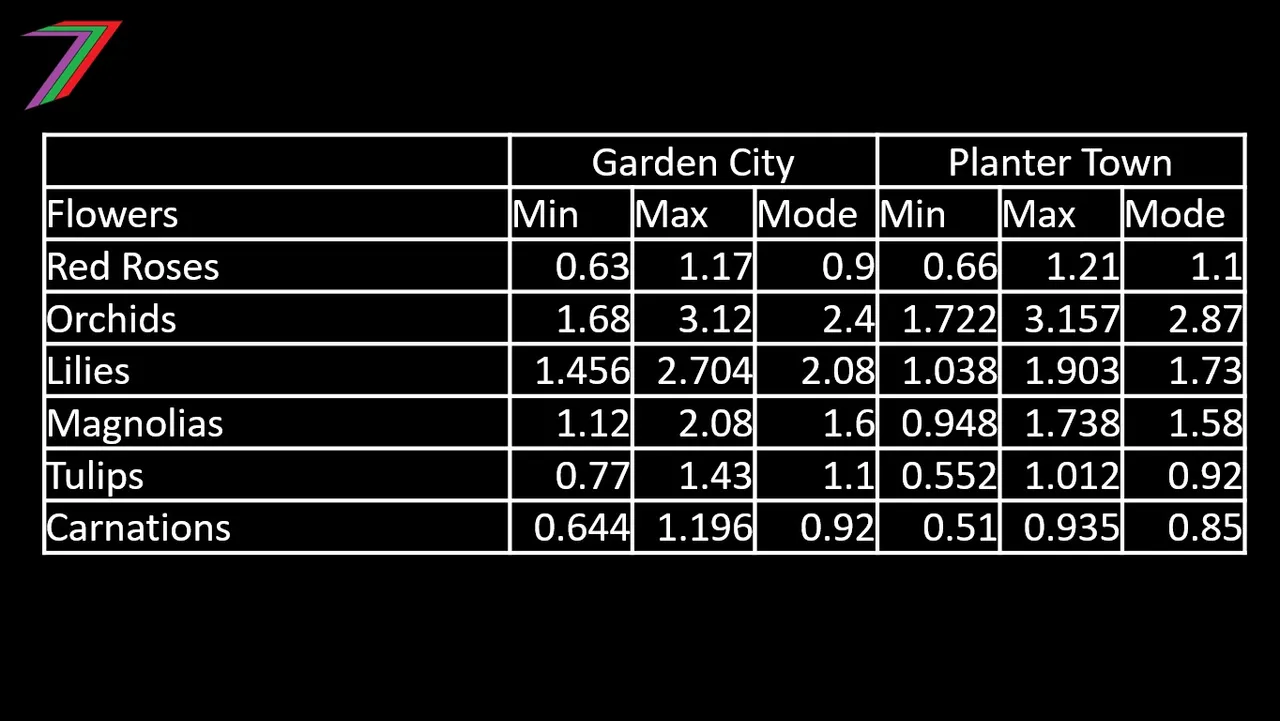
Table 3: Minimum, maximum, and mode (Botan Town & Green Town)
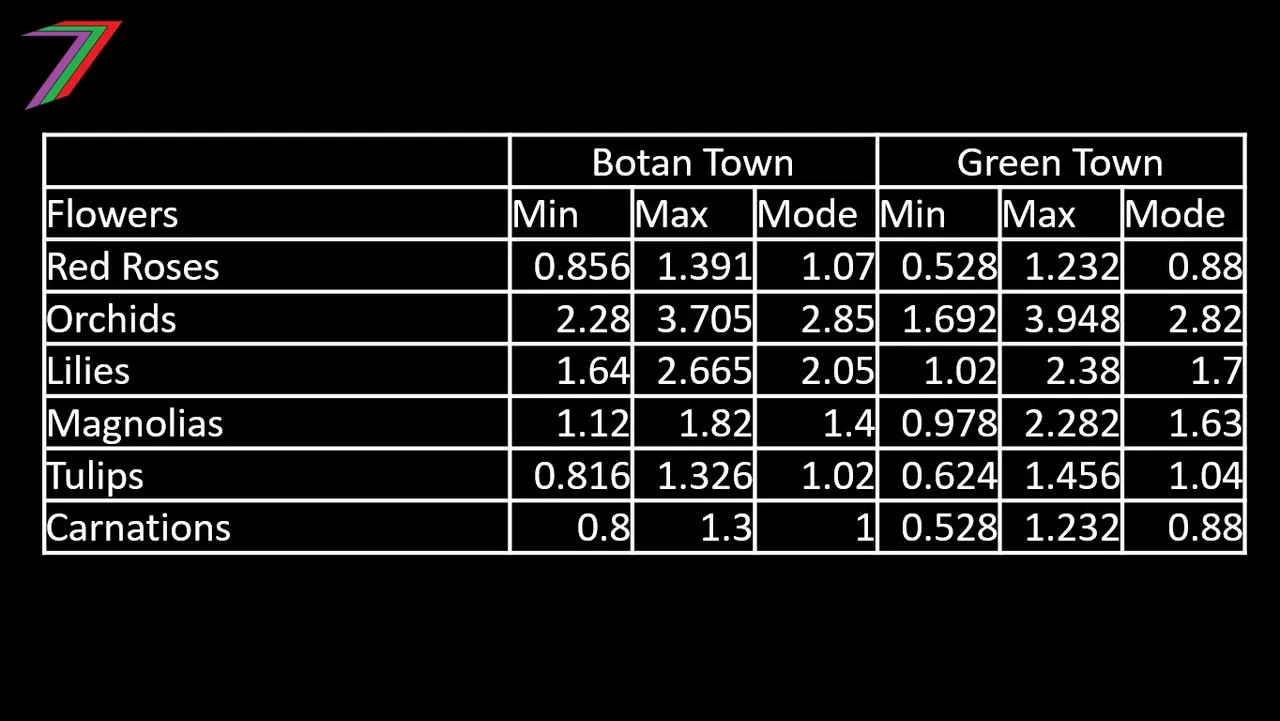
Table 4: Minimum, maximum, and mode (Arboretum)
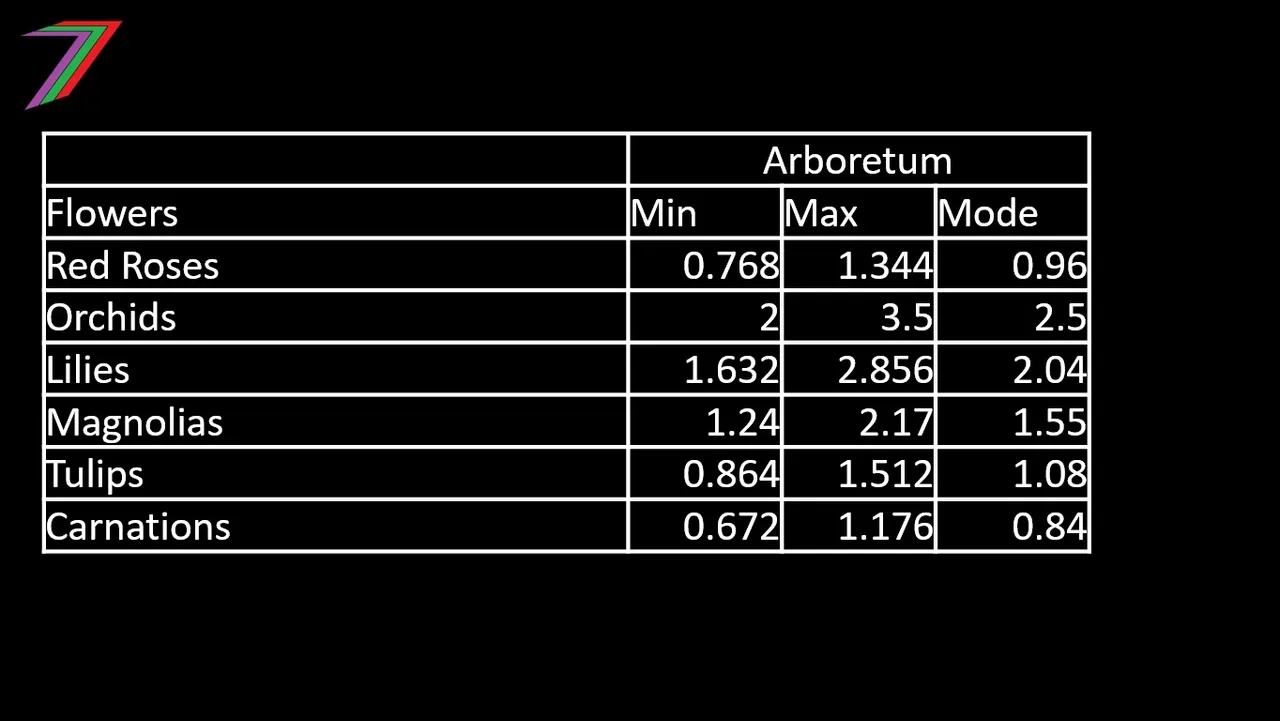
Entry format
For this challenge, I expect to see entries made in the following format:
Buying
Name of Place:
Goods purchased:
Number purchased:
Amount spent on goods:
Selling
Name of Place:
Example of entry
Buying
Name of Place: Green Town
Goods purchased: Lilies
Number purchased: 4,705
Amount spent on goods: $7,998.5
Selling
Name of Place: Garden City
The closing date and time for this contest is 6PM coordinated universal time (UTC) 13/07/2023. Responses after this time will not be accepted. Next month, the answers will be provided in the results post along with the video containing the generation of selling prices using the model.
I hope everyone has fun and enjoys this first challenge. I look forward to your participation in the remaining challenges. If you have any questions, feel free to ask in the comments section.
More posts

I have several collection of posts. I have organised these collections based on content and purpose.
The first collection contains six collection posts created before PeakD had the collection feature. Four of these posts relate to the core of my content, one of them contains all my Actifit Posts, and one of the them contains my video course ‘Economics is Everyone’.

The second collection consists of the posts that I consider define my channel. These posts are significant in terms of content as well as how they contribute to the growth of the channel. These posts reveal the most about what I believe in.

The third and fourth collection is what I call my ‘Freedom-base Economics living book’. They contain all the posts that support my ideas about the value and power of freedom. Some of these posts explain what we can achieve with freedom and what we need to utilise it. Some of them explain how we are deprived of freedom and how we often give up freedom for security and comfort. The third collection concludes with possible scenarios depending on what we (society) choose to do.


Hive: Future of Social Media

Spectrumecons on the Hive blockchain

